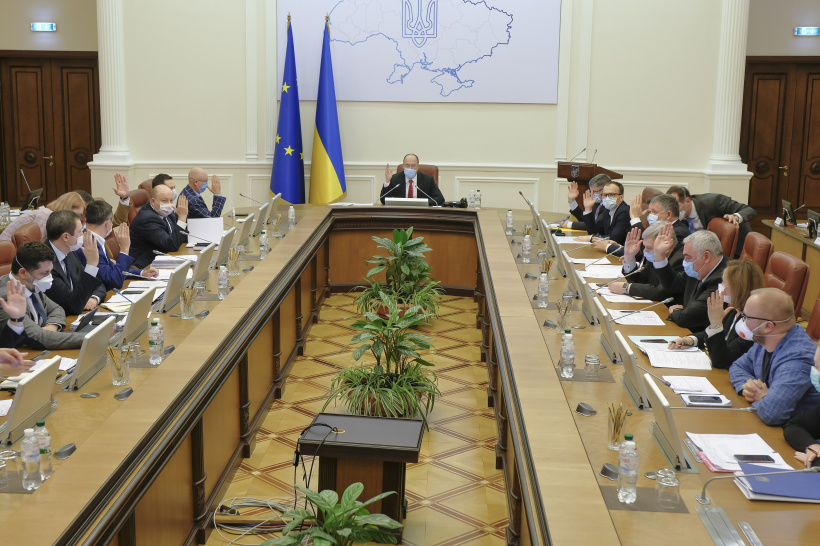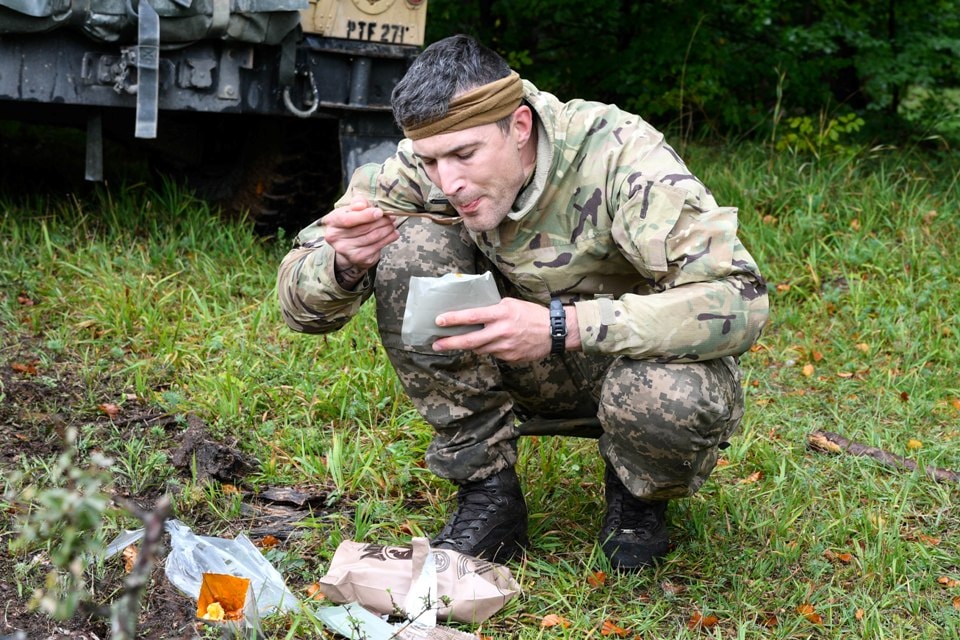Amid the ongoing worldwide pandemic of the novel strain of coronavirus COVID-19, Ukraine shows a relatively low infection spread and mortality rate at the moment as compared to other European countries. The first infection case in Ukraine was confirmed two weeks ago and on the morning of 26 March, the Health Ministry reported a total of 156 coronavirus cases in Ukraine, including 150 active cases, five deaths, and one recovery case.

In order to slow down the spread rate of the coronavirus, the Ukrainian government has previously imposed a quarantine in the country, closing all educational establishments from preschools to universities, imposing a ban on public mass events, restricting public transportation, and denying entry for foreigners.
The emergency situation regime is usually applied locally in areas hit hard by a natural disaster.
Minister of Interior Arsen Avakov, the most-criticized person in Zelenskyy’s government, advocated for the state of emergency that provides more restrictive measures than declaring the emergency situation, however, on the day before the meeting of the Cabinet Avakov stated that the state of emergency was not necessary. Another advocate for the state of emergency was Health Minister Ilia Yemets, who urged the Parliament to declare it.
These days, Ukrainian President Volodymyr Zelenskyy narrates updates on the COVID-19 situation in Ukraine every morning. The texts he reads include not only general updates on the developments, hygiene advice, but also justification for the unpopular measures intended to stop the further spreading of the infection.
Another major day-to-day event in the presidential life now are meetings – or rather teleconferences – of the so-called Coordination Council on countering the spread of COVID-19, an advisory board consisting of Zelenskyy himself, his aides and managers, PM Denys Shmyhal with ministers of interior and foreign affairs, the health minister and the country’s chief health inspector, ministers of infrastructure, social policies, defense, chiefs of the RNBO (defense and security council), the military staff and the border service. Chiefs of the Security Service of Ukraine (SBU) and the Verkhovna Rada were included in the Commission only days ago, on 24 March.
The coordination council is an advisory board to the President and it doesn’t issue any legal acts, but merely harmonizes the actions of the government with the presidential will.
Oligarchy

Ukrainian know-how in the effort to overcome the coronavirus is involving local oligarchs in the process. On 16 March, Zelenskyy met with the “representatives of big businesses” including “owners and CEOs of the largest Ukrainian companies and business groups.” Officially, the presidential office told how Zelenskyy put his foot down and appealed to the “Ukrainian business leaders” to be socially responsible in hard situations met by the country and urged to sponsor buying “large batches of [COVID-19] tests, necessary medical equipment, means of protection and disinfection.” And they promised to “provide all assistance” to the state.

However unofficially, as Ukrainian Pravda reported referring to unnamed participants of the meeting that Zelenskyy also urged the oligarchs to oversee certain regions of Ukraine where they have assets and, respectively, human and non-human resources.
- Rinat Akhmetov: the oblasts of Ivano-Frankivsk, Lviv, Donetsk, Luhansk, and the cities “where he’s influential” such as Zelenskyy’s hometown of Kryvyi Rih.
- Ihor Kolomoiskyi: Zaporizhzhia oblast.
- Kolomoiskyi’s ally Ihor Palytsia: Volyn Oblast (along with Kolomoiskyi) and Ternopil Oblast.
- Viktor Pinchuk: Dnipropetrovsk Oblast.
- Andriy Verevskyi: the oblasts of Poltava and Kirovohrad.
- Yuriy Kosiuk: the oblasts of Vinnytsia and Cherkasy.
- Andriy Stavnitser: Odesa Oblast.
- Oleksandr Yaroslavskyi: Kharkiv Oblast.
Timeline of the coronavirus pandemic in Ukraine
20 February
Nine police officers were injured and 24 people arrested during the disorderly clashes in the small Ukrainian city of Novi Sanzhary where locals protested against the government’s decision to temporarily host evacuees from the coronavirus outburst epicenter in China. A journalistic investigation reveals that panic was the result of an organized online campaign connected to Russia.
11 March
The Cabinet of Ministers introduces a three-week nationwide quarantine, banning mass events with over 200 participants and imposing a lock-down on all educational institutions starting from 12 March.
12 March
13 March
Reports on the first coronavirus death in Ukraine, a 71-year-old woman died in Zhytomyr Oblast. Another Ukrainian citizen dies in Italy.
At a Cabinet meeting, Ukrainian Interior Minister Avakov says that there are 12 coronavirus cases in the occupied city of Horlivka, Donetsk Oblast, proposes restrictions on crossing the checkpoints on the contact line.
14 March
At least 10,000 veterans and activists marched in Kyiv in a 1.5 km long column, protesting against the possible adoption of laws assigning legitimacy to the “DNR” and “LNR” through the creation of a “Consultation Council” with the Russian proxies.
Read also: Quarantine parliament: Ukrainians rally against using coronavirus situation to rush treasonous laws
16 March
The entry ban for foreigners comes into force.
17 March
The second coronavirus death in the country, a 33-year-old woman dies in Chernivtsi Oblast. Subways shut down in the cities of Kyiv, Kharkiv, Dnipro.
The Cabinet bans railway and air traffic, as well as bus intercity and interregional passenger transport services, restricts the number of passengers in city trams, trolleybuses and buses to 10 passengers. Other restrictions include the prohibition of all mass gatherings involving more than 10 people, suspension of all restaurants, shopping and entertainment centers.
Read also: Parliament’s urgent quarantine agenda: MPs appoint new Prosecutor General
18 March
The third coronavirus patient dies, a 56-year-old woman in Ivano-Frankivsk Oblast.
The emergency situation regime introduced in Kyiv Oblast as the Kyiv Regional State Administration classified the COVID-19 situation as “biomedical emergency of a regional nature.”
The national railway operator Ukrzaliznytsia closes all railway stations in Ukraine.
President Zelenskyy signs the coronavirus law, adopted by the parliament a day before.
19 March
The second Ukrainian national dies in Italy. The Foreign Ministry reports that throughout the pandemic Ukrainian diplomats assisted in the repatriation of 16,079 Ukrainian citizens stranded abroad.
20 March
The government introduces an emergency situation regime in the capital city of Kyiv, and in Dnipropetrovsk and Ivano-Frankivsk oblasts.
The first coronavirus patient in Ukraine, a Chernivtsi man, recovers from the infection while the Ministry of Health reports on 26 confirmed cases of the infection.
Read also: No coronavirus testing in Russia-occupied territories of Ukraine: extent of epidemic unknown
21 March
Ukraine reports 41 lab-confirmed coronavirus cases in the country. The third Ukrainian citizen dies of the coronavirus in Italy.
23 March
The Ukrainian Foreign Ministry reported that in total three Ukrainian nationals died of the COVID-19 abroad, six more recovered, 18 remained in hospitals, 155 were put on quarantine in other countries, and 70,137 returned in Ukraine.
A Ukrainian military cargo plane arrives from China bringing a batch of polymerase chain reaction test systems, rapid tests, artificial lung ventilation machines, facemasks, protective suits.
Reports on the first confirmed coronavirus case in the Russia-occupied region of Crimea.
24 March
Locked up by the quarantine in their homes, Ukrainians launch an online protest against the possible inconspicuous recognition of the Russian-run sham republics of Luhansk and Donetsk by the Ukrainian government.
The number of confirmed coronavirus cases in Ukraine rises to 97. Six new cases reported in the Russia-occupied region of Crimea.
The Main Directorate of Intelligence of Ukraine reports that occupation administrations withhold information on coronavirus spread in occupied Donetsk and Luhansk. According to the agency, throughout the previous week, nine people died of alleged “common pneumonia” in the 7th Luhansk city hospital and none was officially diagnosed with COVID-19 infection.
The Security Service of Ukraine (SBU) detains a Kherson woman who disseminated disinformation on coronavirus spread in online groups she administered with a total audience of nearly 100,000 subscribers.
25 March
The lockdown extended until 24 April; a nationwide state of emergency declared in Ukraine for one month. The fourth and fifth coronavirus death confirmed, the total number of cases hits 145.
According to the Foreign Ministry, the number of repatriated Ukrainians reaches 78,592 as of March 24.
Read more:
- Ukrainians launch online protest against recognition of Russian-run “Donbas republics” set for 25 March
- No coronavirus testing in Russia-occupied territories of Ukraine: extent of epidemic unknown
- Coronavirus is not a biological weapon. It’s an information one
- The pro-Russian network behind coronavirus riots in a small Ukrainian town
- Parliament’s urgent quarantine agenda: MPs appoint new Prosecutor General
- Ukrainian MFA publishes border crossing & consular assistance rules vis-a-vis COVID-19
- The Kremlin and its disinformation about coronavirus: when confusion is the message
- Disinformation mash-up: MH17, coronavirus, Russophobia, Ukraine
- Appeal hearing in Markiv case postponed due to COVID-19
- Nostradamus and coronavirus: How Russian propagandists use names of seers to push own narratives
- Shady agreements legitimizing Russia’s puppet “republics” likely signed in Minsk
- Russian propaganda’s “conspiratorial” virus: disinformation review











